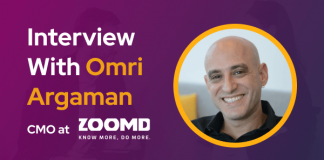Hi Christopher, tell us about yourself and your background.
I’d have to say that I’m probably like a hybrid CX practitioner and content strategist. Simply put, I like helping companies build stronger ties with their stakeholders via content. Been doing that professionally for about just under 10 years, and probably been focused on CX for the last 3 ½ years. In 2021, I even got my Forrester Research CX core certification.
I started out in public relations and became a PR director at a local agency. From there, I became a marketing strategist at another digital marketing agency, did some freelance work, and now I’m helping Bushel improve their stakeholders’ experiences through our team’s internal and external channels.
For clarification, I choose the word stakeholders because that has been more inclusive. A stakeholder is simply someone with a shared interest or concern in the business, which includes but isn’t limited to customers, employees, investors, and vendors. From my observation, there has been some divergence where some might think CX only means the customer and excludes the employees and systems, this leads to other companies talking about employee experience (EX) as a separate field, when in reality they should be one and the same.
How did you start working in the customer experience space?
During my previous agency life, our team was going through a sort of transformation from a traditional digital agency to one that had to become more consultative. I had three amazing mentors who encouraged me to explore more about how other organizations are changing their views about content, from something that has been largely commoditized to something more akin to a business asset, much like a vehicle fleet or physical store. That’s when I started diving into content strategy and customer experience to understand where they converged and complemented each other.
From there, I spent pretty much all of my spare time learning more about CX, reading books, blogs, and integrating the practices where I could in my day-to-day roles and side projects until I joined Bushel.
Can you tell us a little bit about your current role?
Currently, I’m the content marketer at Bushel in Fargo, ND and have been there for about a year and a half. As part of that role, I’ve had the privilege of helping our team incorporate more CX design practices in how we find, attract, and support stakeholders. We’ve created personas to help us see what our customers might be thinking and trying to do as part of their role in their organization. We’ve interviewed customers to better understand their needs and preferences when they’re looking for similar products. And we used customer journeys to start refining our customer data so we can improve how our teams support each other while keeping in mind what the customer is trying to accomplish at a specific moment.
On the content management and production side of my role, I use CX to better understand the stakeholders’ context to improve our design decisions and test different content ideas. For example, we might use our CMS to serve up different content on our website based on who is interacting with it and how they’re doing it. That way we’re more likely to create content that might be helpful or relevant to their decision-making process, the device they are using, or even suggest next steps for them based on what we know about them. Then we can measure our success by looking at the KPIs we’re setting for ourselves to see if it is having a positive impact on stakeholders and the business. We’ll also use CX to inform which content is most likely to be most important on our pages to let people uncover their own journey.
Other examples of where I use CX for content management and production are identifying where there is a lack of content and determining a strategy for a new channel. Anyone who has worked in marketing has heard the “We need to have a blog/podcast/webinar/TikTok” pitch. For me, I get to dig into those requests to better understand the reasons for that request, what are the design limitations of the channel, how we’d measure success, and how to create a sustainable program to support it. Not many other organizations understand how important that planning process is. Without it you see a stumbling start, content that doesn’t fit the context of the channel, or disparate content that no longer gets maintained but is still accessed and referenced by stakeholders.
How can companies better listen and understand their customer base?
Treat stakeholders (customers, employees, support staff, etc.) as heroes of their own stories and let your company play the supporting role. Make time to visit your stakeholders, not just the die-hard supporters but also the ones who left for a different product, service, or organization. Go beyond surveys and focus groups. For customers, visiting their environment gives you a chance to uncover more of the reasons behind their preferences and expectations, which isn’t something you can get from a data dashboard or quantitative study alone. Ask what they care about, the tasks they’re trying to complete, pain points with an existing solution, what they think an ideal solution would be, and how they’d go about trying to find a solution. Your goal should be how to be the best at anticipating and supporting them through those steps across all devices and channels.
Never assume that just because you have a fix that your customers want to buy it on the spot. This leads to very intrusive marketing and sales practices that can actually discourage people from wanting to become a customer. Instead, try to anticipate the questions and needs they have, to help them make the best decision. That’s because customers convert when they’re ready and able to. Remember, you can lead a user to a landing page, but you can’t make them convert.
What are some companies that you think are doing an excellent job at customer experience, and why?
For SAAS companies, I’m biased as I think Bushel is doing an excellent job at leading the way in how we’re supporting an end-to-end customer experience. As an organization, we’re always improving how marketing, sales, and customer success teams work together to be as understanding and helpful as we can be to each other, but most importantly our customers. For example, our customer success teams and marketing teams are almost in lock-step when a new customer comes onboard, producing the collateral needed to shorten learning curves and increase the number of end users who are actively using the new tools.
For more product-based companies, I absolutely rave about Fender Musical Instruments customer experience and not just because I like their guitars. If you take a good look at their website and compare it to their competition, you’ll probably notice it right away. Fender seems to know that a satisfied customer is one who feels confident and supported in choosing the right instrument, starting from initial research through learning how to play it. Their strategy is to give players the tools they need to make the best choice. This is apparent in their blogs, which are a treasure trove of how-to articles, tips for playing guitars, as well as product updates featuring new artists (well, probably new to me). They also have an ecommerce-like channel so when users are ready to buy, they can do so online or find it at a store near them without having that user ever see a competitive product next to it.
Many companies are currently undergoing digital transformation processes – what are your tips on a successful digital transformation?
- Use a shared vocabulary.
- It might feel silly or excessive to set some guardrails about how teams refer to concepts and terms, but trust me that it will reduce the risk of misunderstandings and reworks when it comes time to plan, build, and implement new digital solutions.
- Hyperfocus on the end result or vision for the customer first, then align your teams, tools, and processes to support it.
- When the end result or vision for the customer isn’t clear from the beginning, a digital transformation project can be quite expensive and tough to implement. In those cases, what ends up happening are multiple teams and multiple tools working to solve the same goals.
- Do your due diligence to fully understand what your customer is trying to accomplish or solve within a specific context. Consider who and what they might interact with from your company. Consider what steps and information are needed to help them achieve that goal.
- Do not downplay or minimize upstream and downstream effects. They’re just as important to consider.
- When you make changes in one area of the customer experience, make sure that you’re looking at how that impacts stakeholder interactions in the steps leading up to that process as well as what happens after. Simplifying or digitizing one process might mean more volume downstream, and that can be frustrating if employees and/or customers aren’t ready for it.
What are some CX solutions or tools that you’re keeping your eyes on right now?
Smaply is definitely one to try out or keep on your radar.
Did you read any interesting books this past summer that you’d like to recommend?
- Quantum Marketing by Raja Rajamannar; Marketing 5.0 by Philip Kotler, Hermawan, Karta Jaya, Iwan Setiawan
- These two books complement each other very well, by showing what marketing teams need to consider in order to be successful in a post-COVID environment and the challenges of marketing to such a diverse audience in terms of expectations, increasing polarization, and the still existent digital divide. CX practices play a leading role in both.
- Upstream by Dan Heath
- Heath does a great job of demonstrating the benefits of trying to prevent problems instead of reacting to them. He also shares some of the challenges associated with coming up with upstream solutions, including their complexity, implementation speed, and measurement. Great for helping others understand how a change in one part of a customer journey can impact multiple points down the line.
- Strategic Writing for UX by Torrey Podmajersky
- When content strategy is a major part of your role, you want to understand how to best move stakeholders from one touchpoint to the next. This book is a great reference for how to organize content to achieve a business goal. It’s helpful for thinking about how organizations can create the content needed to empower their customers.
What is your favorite CX metric?
This is actually a tough question because we all know how there isn’t a silver bullet for measuring the success of a CX project. I’d say clickthrough rate if I had to pick one, and here’s why. From a marketing standpoint, it’s easy to get impressions. Anyone with content and a budget can get eyealls on an ad. But by going with clickthrough rates, that gives you some indication if that content is engaging enough for someone to click on it or take the suggested action on the ad.






